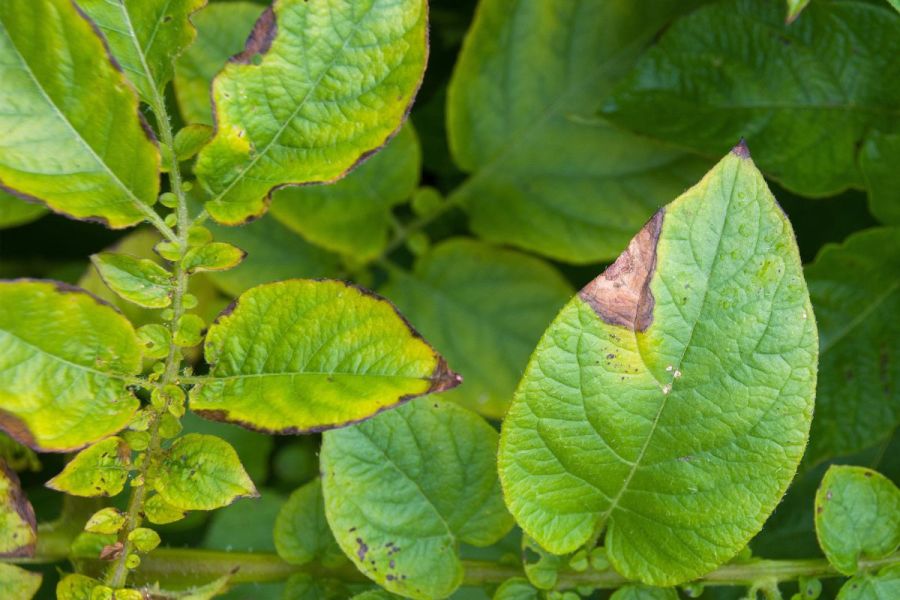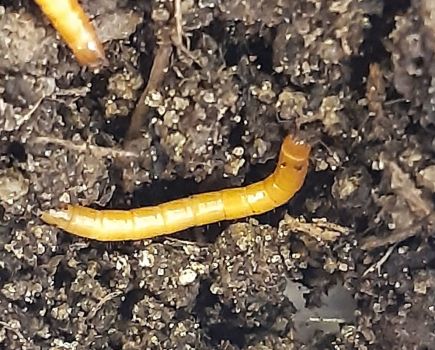After much uncertainty, the HSE finally announced last month that mancozeb doesn’t meet approval criteria and therefore it proposes to withdraw it from use. CPM asks whether the industry is prepared for the impending loss and what can fill the gap.
“Without doubt, mancozeb will be missed.”
By Janine Adamson
It’s not been an over-night activity, in fact the Health & Safety Executive (HSE) first kicked off the review of mancozeb back in September 2021. However, it’s finally been announced that the active poses a threat to human health, with operator exposure deemed at a level beyond safe.
This means that mancozeb is to be withdrawn at the end of the 2025 season, marking the conclusion of a multi-site fungicide which has helped to control potato late blight since its introduction more than 60 years ago.
At the time of writing, timelines for the sale and disposal of mancozeb-containing products were still to be announced by DEFRA, but based on documents published by the World Trade Organization (WTO), the body to which notification must be issued, the following dates appear likely:
- Active substance expiry to be extended to 30 April 2024
- Sale and supply of mancozeb-containing products to end on 31 October 2024
- Storage, disposal and use of mancozeb-containing products to end on 31 October 2025
The HSE’s decision was made based on evidence for continuing the approval of mancozeb, including supporting data submitted by UPL and Indofil Industries.
UPL’s Geoff Hailstone says growers should plan their purchases and usage accordingly to avoid disruptions to planned blight programmes. He stresses that these are proposed timelines which can only be finalised at the end of the WTO consultation process, which should be by early spring.
“The WTO consultation process involves discussions with member countries and stakeholders, and their feedback could potentially influence the final decision on the withdrawal timelines,” he says.
Assuming the proposed withdrawal timelines are ratified, Geoff shares that UPL plans to have Nautile DG (cymoxanil+ mancozeb) and Manzate 75 WG (mancozeb) available this year.
“We’re planning our production for mancozeb based on it being approved for sale this season. The industry is coming off the back of a high-pressure year with increasing concerns regarding resistance pressure. With mancozeb being the only multi-site approved, it’s used multiple times in a programme so it’s difficult to ascertain what a typical season is,” he says.
“I’d encourage growers and advisors to speak to their suppliers to let them know what they expect to require. This information greatly helps with production planning.”
Indeed, the loss of mancozeb has several implications for crop protection strategies, says Nick Winmill, Agrii’s head of potato R&D.
“Without doubt, mancozeb will be missed. As the only fungicide with multi-site activity it’s the best mix partner we have available, it’s relatively inexpensive to incorporate in a programme, and provides incidental control of Alternaria species. The same can’t be said of any of the alternatives,” he says.
Since the EU called time on mancozeb in 2020, Agrii trials have been considering possible replacements. This was permitted because of a loophole when the regulatory authority changed at the end of the Brexit transition period, meaning mancozeb was given a temporary reprieve while the HSE’s Chemicals Regulation Division (CRD) reviewed the data.
Nick says while none of the products trialled can be considered a like-for-like replacement, several have shown promise. “The principal observation is that programmes will have to be adapted, but they are also likely to be more complex and costly as a result,” he warns.
Yorkshire farmer and CPM columnist, Andrew Wilson, agrees on the usefulness of the active. “Personally, I think losing mancozeb is more serious than it perhaps first appears. Soley for late blight it’s no longer a front-line product, but it’s vital as the last remaining multi-site, a tremendously useful partner product, and instrumental in reducing Alternaria and rhizoctonia pressure,” he says.
“Invariably risk and cost will both increase to the grower. Mancozeb has been around for a long time, one does wonder what’s instigating these decisions and indeed, ‘what’s next’?”
Where Alternaria is a concern, growers can apply Narita (difenoconazole), Amistar (azoxystrobin), Signum (boscalid+ pyraclostrobin) or Caligula (fluopyram+ prothioconazole), although Nick says these products vary in the level of control.
Across continental Europe, isolates showing reduced sensitivity to fungicides belonging to the Quinone outside Inhibitor (QoI) mode of action group – namely pyraclostrobin and azoxystrobin – are widespread. In recent years, isolates with reduced sensitivity to some SDHI active substances, namely boscalid, have also been detected.
Nick says of the active substances considered in Agrii trials as a replacement for mancozeb against late blight, two have shown value. He advises that potassium phosphonates has shown good levels of control but is currently only available as a co-form with ametoctradin and is limited to three applications per crop.
“We’ve looked at two potassium phosphonates-containing products over several seasons. Only one has delivered the high-level protection expected and isn’t currently authorised for use, but we’re prepared to submit an application for emergency authorisation if other avenues fail,” he says.
The other product to have shown promise is Innocul8, a foliar fertiliser containing PREtec technology – a form of peptides derived from naturally occurring proteins that elicits a response against crop threats. Nick explains that trial data supports its place in a programme, but as a plant health promoter, it can’t be considered as a replacement for mancozeb.
“Biological crop protection products and better nutrition will have a greater role to play in helping to reduce the damage caused by disease, but while these may serve to reduce the amount of fungicides required, they’re not a replacement. Innocul8 is one example of how these products can be useful but they have to be seen as part of a wider IPM strategy which considers variety choice and better plant health,” he says.
And while mancozeb remains available and is approved by processors or end-users, Nick stresses it makes sense to continue using it given its acknowledged value to crop protection programmes.
“We also have to be mindful of maintaining a balanced programme that considers the spread of resistant strains. It may be that the CAA-resistant strain 43_A1 has already spread to GB, but mancozeb has helped to keep it at bay. It would be premature to remove it from a programme while it remains authorised for use,” he says.
Geoff agrees that developments on the content ring alarm bells for the UK. He advises growers to continue to adhere to FRAC guidance – mix products with different modes of action in the same application and alternate mixes within the programme.
“Without mancozeb, products like Proxanil (cymoxanil+ propamocarb) would become even more important. The two actives have no reported resistance issues; they’re both from different chemistry groups and are the only members of those groups.
“Cymoxanil is known to be one of the few actives with kickback activity and has a very low risk of developing resistance. Whereas propamocarb has strong anti-sporulant activity, good movement in the plant and is only active in the carbamate resistance group,” he concludes.
This article was taken from the latest issue of CPM. Read the article in full here.
For more articles like this, subscribe here.
Sign up for Crop Production Magazine’s FREE e-newsletter here.




